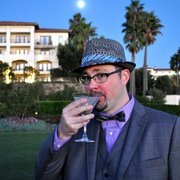Highlights
Site of Nazi concentration & Soviet prison camps with exhibits
Str. d. Nationen 22, 16515 Oranienburg, Germany Get directions
Site of Nazi concentration & Soviet prison camps with exhibits
Str. d. Nationen 22, 16515 Oranienburg, Germany Get directions
Mike Penk
Lyns Rudd
Katrien Driesen
Marika Shatrova (Shatrov)
Craig Dcruz
Janet L
Matt Robertson-Camp
Shreyas Seshadri

Summer O.

Kate C.

Helio D.

Ashley E.

Marian M.

Guy K.

Connie H.

Tracey A.

Jasmine A.

Mandie M.

Susan L.

Wyatt G.

Dale M.

Anj L.

Gregory S.

Torterry C.

Blake A.

Ciara S.

Patrick P.

Robert K.

Jav D.

Greg E.

Olivia M.

alfred g.

Qype User (snaefe…)
Jay D.

Nolan H.

Anya R.

Lori H.

Andreas V.

Dan L.

Jon S.
Anders H.
KA T.

Mel L.